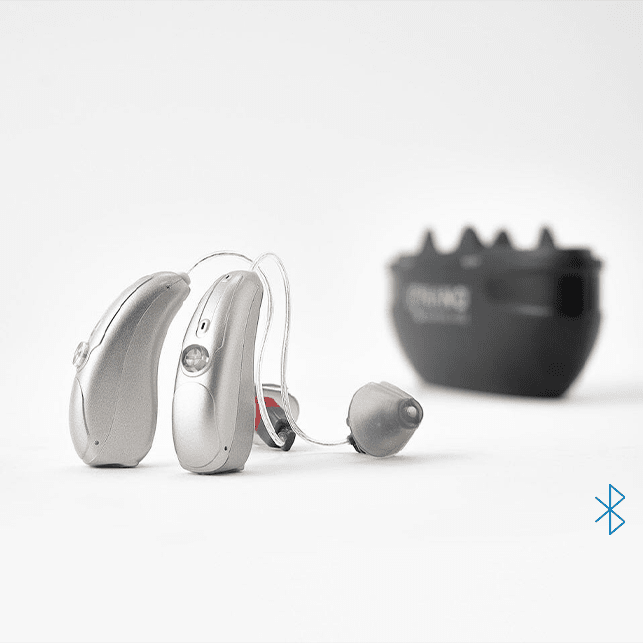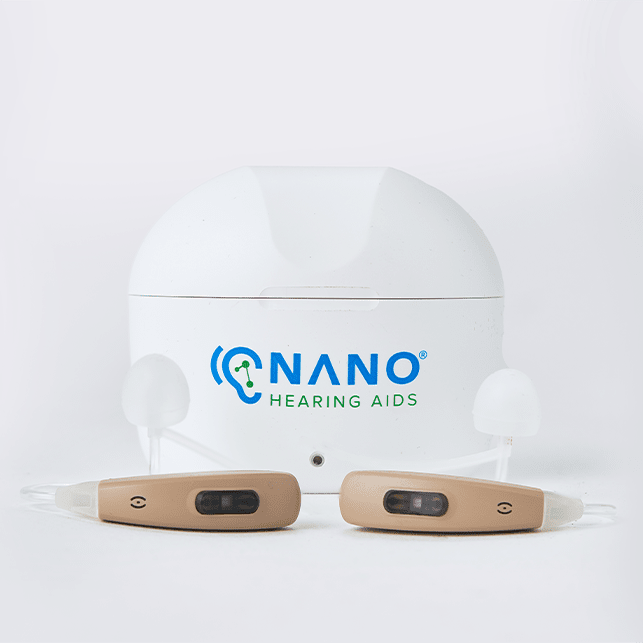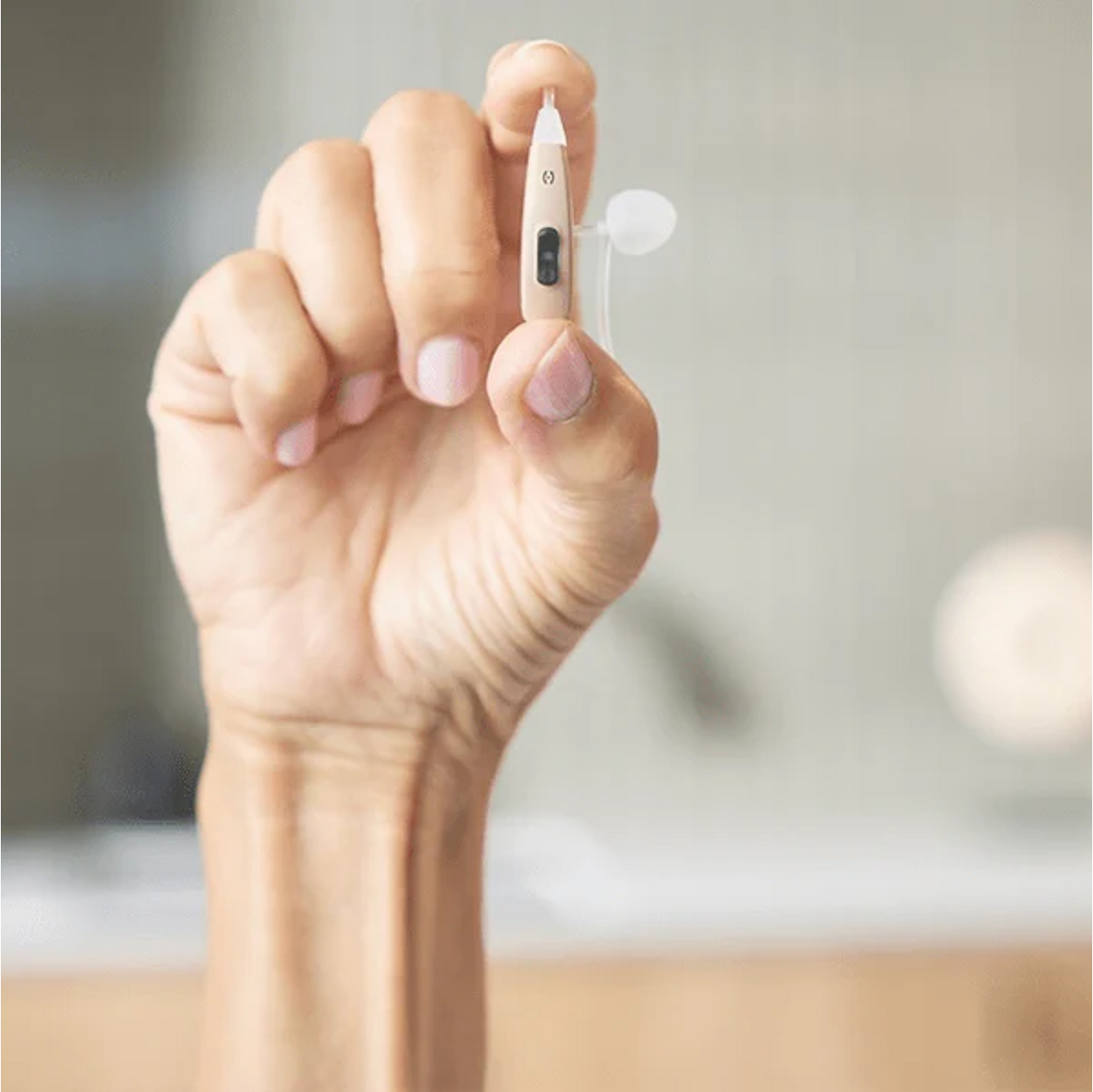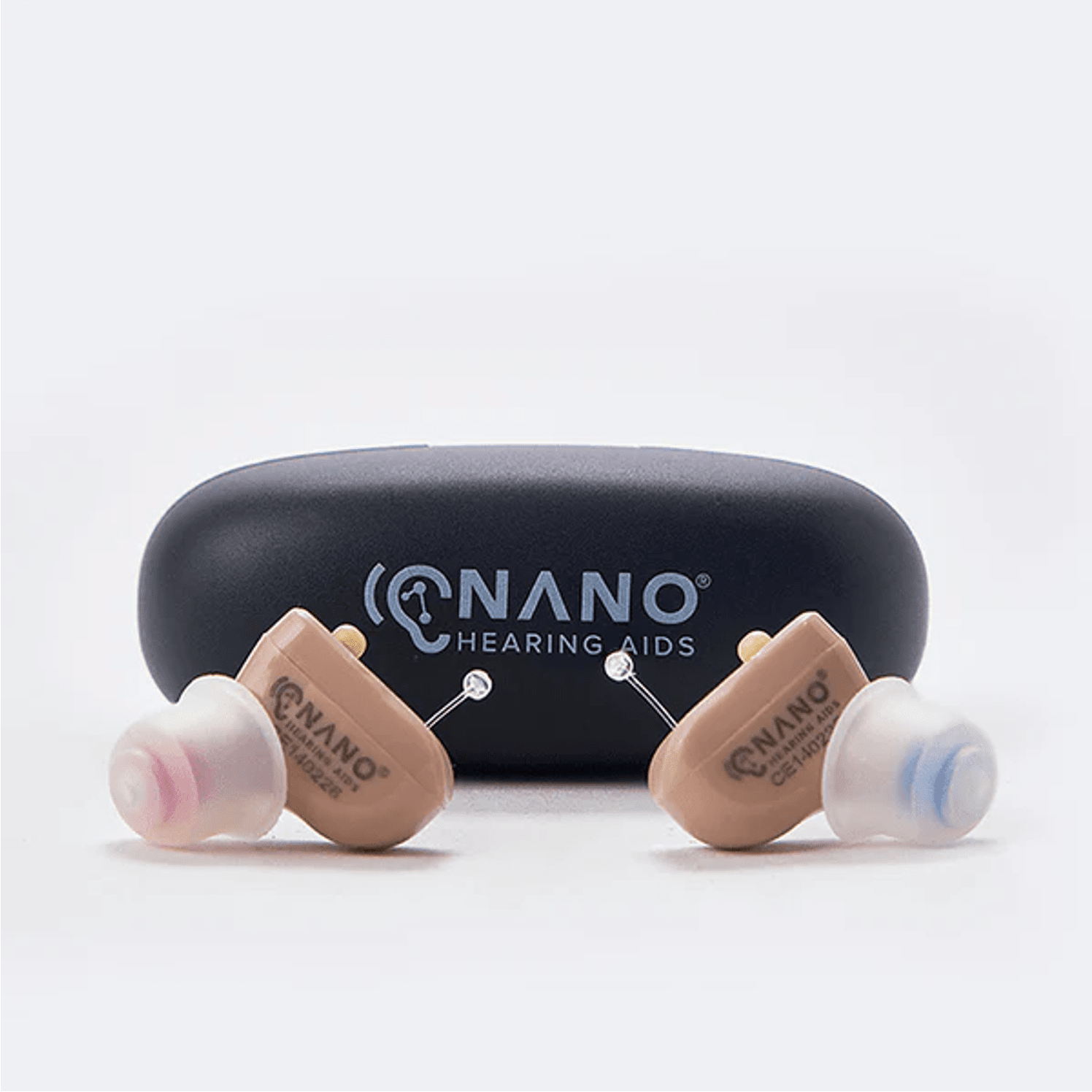Key Takeaways
- Regular cleaning prevents wax and dirt build-up, ensuring clear sound quality.
- Daily maintenance involves simple steps like brushing and wiping down the device.
- Deep cleaning should be done weekly to address hard-to-reach areas and moisture build-up.
- Use a hearing aid dryer to manage moisture and extend the life of your device.
- Nano OTC Hearing Aids, including our First Ear Pro BTE model, are designed with simplicity in mind, which means that they’re also easy to maintain.
Nano Hearing Aids are FDA-registered, Class I devices. These OTC hearing aids are designed for individuals over 18 years of age with perceived mild to moderate hearing impairment. Nano won the Top ENT Solution Provider 2023, has 24/7 customer care, and has an affordable price compared to others.
Cleaning Behind-The-Ear (BTE) Hearing Aids
Behind-the-ear (BTE) hearing aids, with their external components, are particularly susceptible to wax and dirt accumulation, which can obstruct sound quality and cause discomfort.
Why Clean Your BTE Hearing Aids Regularly
- Maintaining Optimal Performance: Consistent cleaning ensures that your hearing aids deliver the clear and accurate sound quality you rely on.
- Protecting Internal Components: Removing dirt and wax helps prevent damage to the sensitive electronics within the hearing aids.
- Promoting Ear Health: Regular cleaning minimizes the risk of bacteria build-up, reducing the chances of ear infections.
Common Issues with BTE Hearing Aids
- Wax Build-Up: Earwax can accumulate on your hearing aids, blocking the microphone and receiver, leading to reduced sound quality.
- Dirt and Debris: Daily use exposes your hearing aids to dirt and debris, which can clog the device's components and affect performance.
- Impact on Sound Quality: Wax and dirt build-up can cause muffled or distorted sounds, hindering effective communication.
- Potential for Damage: Accumulated wax and dirt can damage the internal components, leading to costly repairs or the need for a replacement.
Daily Cleaning Routine for BTE Hearing Aids
Required Cleaning Tools:
- Soft brush (often provided with the hearing aids)
- Cleaning wipes or a soft, dry cloth
- Wax removal tool
Steps to Clean the Body of the Hearing Aid:
- Gently brush the body of the hearing aid to remove visible dirt and wax.
- Focus on the microphone ports and other openings where debris can accumulate.
Cleaning the Microphone Ports:
- Carefully use the soft brush to clean the microphone ports.
- Gently brush away any wax or dirt.
- Ensure the ports are free of obstructions.
Wiping Down the Hearing Aid:
- Use a soft, dry cloth or cleaning wipes to wipe down the entire hearing aid, removing any remaining dirt for a thorough clean.
Deep Cleaning Techniques
When to Perform a Deep Clean:
- Perform a deep clean once a week to address build-up that daily cleaning might miss.
Deep Cleaning the Earmolds:
- Remove the earmolds from the hearing aids.
- Soak them in warm, soapy water for a few minutes to loosen wax and debris.
- Use a soft brush to gently clean the earmolds, focusing on crevices.
- Rinse thoroughly with clean water and allow them to dry completely before reattaching.
Removing and Cleaning Thin Tubes:
- Carefully detach the thin tubes from the hearing aids.
- Use a thin wire or specialized cleaning tool to remove blockages.
- Run the cleaning wire through the entire length of the tube to ensure all debris is removed.
- Reattach the tubes to the hearing aids and ensure they are securely in place.
Proper storage and regular cleaning of Nano's BTE hearing aids help prevent wax build-up and ensure optimal performance.
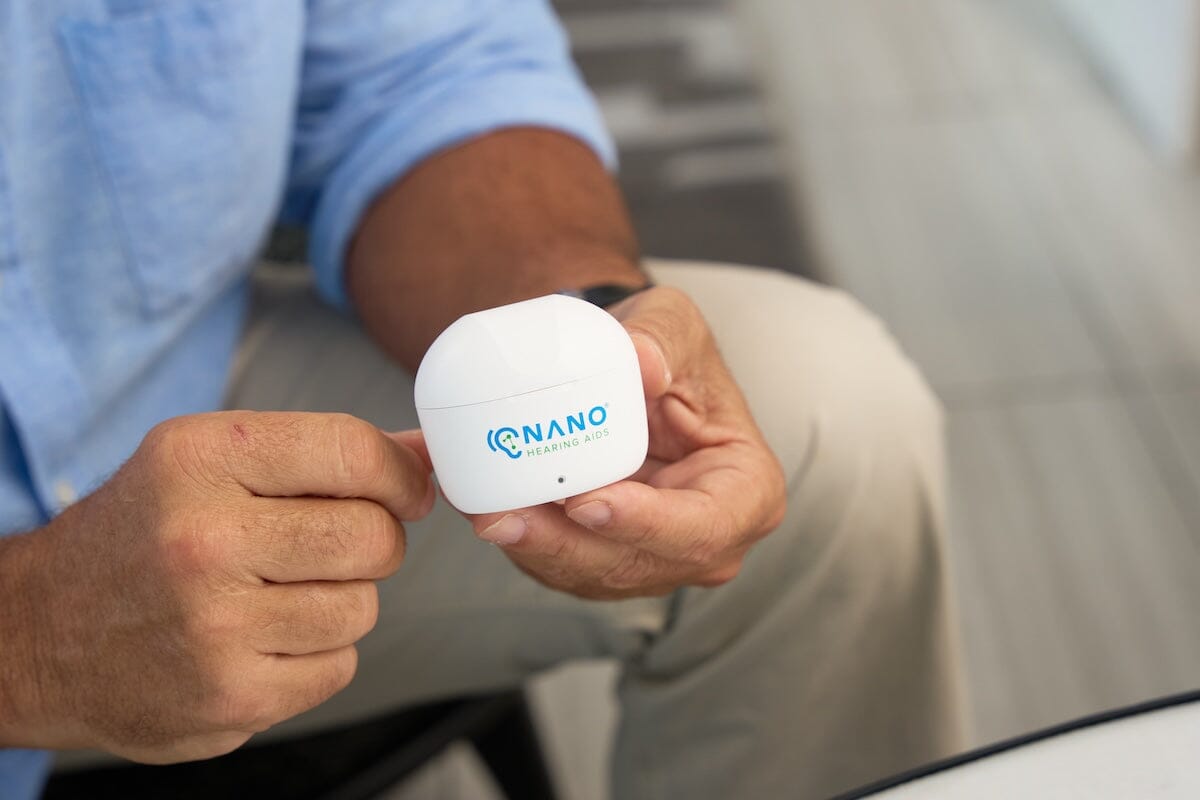
Dealing with Moisture
Moisture build-up may cause reduced sound quality, intermittent function, or a complete shutdown. If your hearing aids aren't working properly, moisture could be the issue.
Using a Hearing Aid Dryer
- A hearing aid dryer removes moisture and sanitizes your devices.
- Use it overnight to keep your hearing aids dry and ready for use.
Preventing Moisture Issues
- Remove hearing aids before swimming, showering, or any water activities.
- Consider protective covers in humid environments or during activities that cause sweating.
Replacing Wax Filters
Identifying a Clogged Wax Filter:
- A significant drop in sound quality or muffled sound might indicate a clogged wax filter.
- Inspect the filter regularly and replace it if you see any blockages.
Steps to Replace Wax Filters:
- Remove the old filter using the provided tool.
- Insert a new filter into the hearing aid.
- Ensure the filter is securely in place before using the hearing aid again.
Key Tip:
- Regularly replacing wax filters can significantly improve the performance and longevity of your hearing aids.
- Keep spare wax filters on hand to replace them promptly when needed.
Professional Maintenance
Seek professional help if persistent issues like muffled sound or malfunctioning components occur despite regular cleaning.
Hearing care professionals maintain and repair your hearing aids through:
- Deep cleaning and sanitization
- Replacing damaged components
- Adjusting settings for optimal performance
- Providing advice on care and maintenance
Regular check-ups help ensure your hearing aids work effectively and provide the best hearing experience.
Avoiding Common Mistakes
To keep your BTE hearing aids in optimal condition:
- Never use water or cleaning solutions directly on the hearing aids—moisture damages electronic components. Use a dry cloth or specialized cleaning wipes.
- Avoid using sharp objects to remove wax or debris—this can damage delicate parts. Use the provided cleaning tools.
- Store your hearing aids in a safe, dry place when not in use—extreme temperatures or moisture can cause irreversible damage.
How Nano Hearing Aids Can Help
Nano's First Ear Pro BTE model, designed for easy maintenance, comes with a charging case that helps keep your hearing aids free from dirt and moisture.
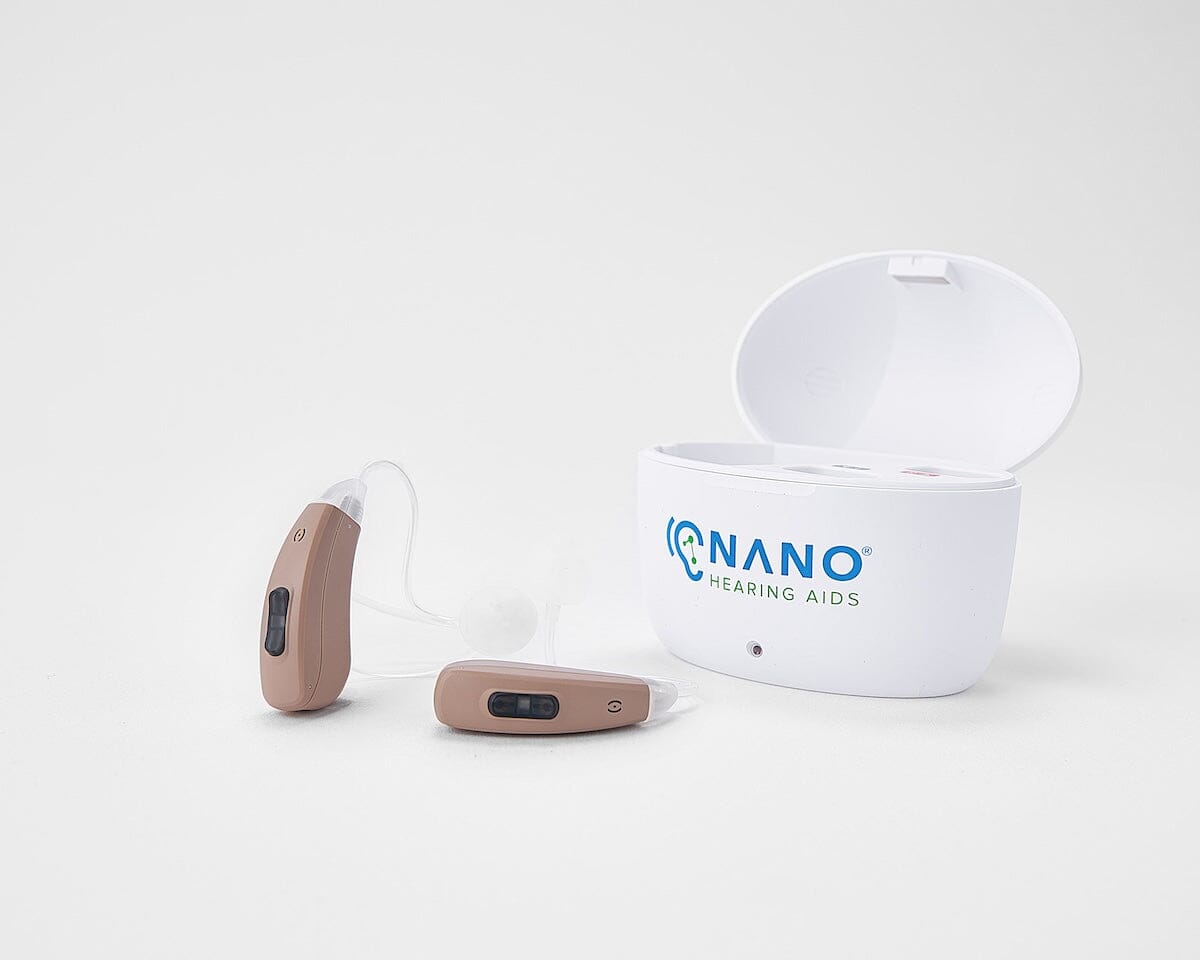
At Nano Hearing Aids, with over seven years of experience, we've ensured that our over-the-counter (OTC) hearing aids are user-friendly and simple to clean.
Our model, the First Ear Pro BTE, exemplifies this with its intuitive design and portable charging case. We also provide dedicated customer support to help you keep your hearing aids in top condition.
Frequently Asked Questions (FAQ)
How often should I clean my BTE hearing aids?
It's recommended to clean your BTE hearing aids daily to prevent wax and dirt build-up. Additionally, perform a deep clean once a week for optimal maintenance.
What tools do I need to clean my hearing aids?
You will need a soft brush, cleaning wipes or a soft, dry cloth, and a wax removal tool. These tools are often provided with the hearing aids or can be purchased separately.
Can I use regular wipes to clean my hearing aids?
It's best to use cleaning wipes specifically designed for hearing aids. Regular wipes may contain chemicals that can damage the device.
How can I tell if my hearing aid's wax filter needs replacing?
If you notice a significant drop in sound quality or if the sound becomes muffled, it might be due to a clogged wax filter. Inspect the filter regularly and replace it if you see any blockages.
What should I do if my hearing aids get wet?
Allow the hearing aids to dry completely before using them again. If they still don't work, seek professional help.
How do I know if my hearing aids need professional cleaning?
If you experience persistent issues with sound quality or if the hearing aids are not working as expected despite regular cleaning, it's time to seek professional help. Professionals can perform thorough cleanings and adjustments that might not be possible at home.
Can I use any type of cleaning solution on my hearing aids?
No, it's important to use cleaning solutions specifically designed for hearing aids. Regular cleaning solutions may contain harsh chemicals that can damage the device.
What are some common mistakes to avoid?
- Using water or regular cleaning solutions directly on the hearing aids
- Using sharp objects to remove wax or debris
- Storing hearing aids in extreme temperatures or moist environments
Why should I choose Nano OTC Hearing Aids?
At Nano Hearing Aids, our OTC hearing aids, such as the First Ear Pro BTE model, are designed to be user-friendly—both when in use and during maintenance.
Our devices, including the First Ear Pro BTE, are FDA-registered Class I medical devices with noise reduction and feedback management technology for clear sound.

